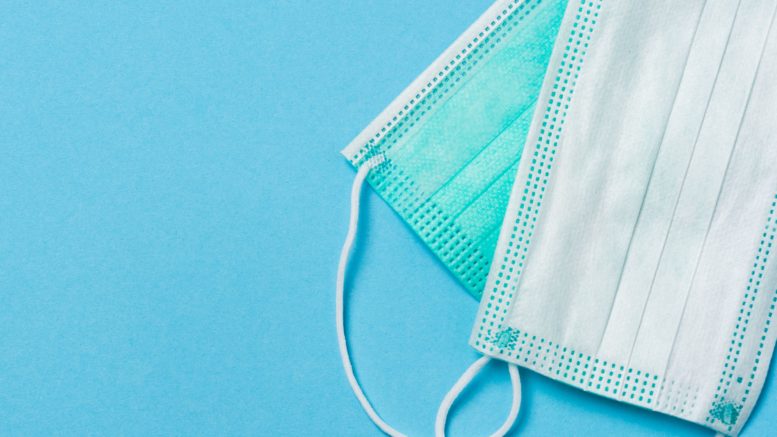Researchers have developed a way to use a simple home aroma diffuser to test whether N95 and other types of sealing masks, such as KN95 and FFP2 masks, are properly fitted, a result which could be used to help protect healthcare workers and the public from contracting or transmitting COVID-19.
The researchers, from the University of Cambridge, tested a variety of materials to construct a new inexpensive and reliable method for assessing the fit of masks. Commercial testing equipment has been in extremely short supply since the outbreak of the COVID-19 pandemic, forcing many healthcare institutions to abandon regular fit-testing of their staff.
Their results, published in the journal Disaster Medicine and Public Health Preparedness, found that widely-available alternatives, such as aroma diffusers and extra-large freezer bags, can be used to make a qualitative fit-testing setup which performs at a similar level to commercial solutions.
While commercial kits typically cost several hundred pounds, the Cambridge setup can be made for under £35. In addition to its potential benefits to the healthcare industry, this inexpensive setup can be used by anyone who wants to test the fit of their mask at home.
The researchers caution, however, that their setup will only test the fit of sealing masks with high filtration ability, such as N95, FFP3, KN95 or FFP2 masks. The method cannot be used to test the fit of surgical or fabric masks, as these do not typically offer the fit or filtration necessary to pass a qualitative fit-test.
Sealing masks offer the wearer a high level of protection, but only if they fit properly, with no gaps between the mask and the wearer's face. Previous studies have found that even if the mask material is highly efficient at filtering fine particles, the effectiveness of the mask is hampered by an imperfect seal.
"So far, there has not been an inexpensive, accessible, and reliable way of testing the fit of sealing masks," said Eugenia O'Kelly from Cambridge's Department of Engineering, the study's first author. "Shortages of the fit-testing equipment that healthcare facilities normally use have left some of them unable to test their workers. And those who do not work in healthcare have had no reliable way to ensure their masks fit."
Most healthcare facilities use qualitative fit-testing methods on their staff, as these are faster and cheaper than quantitative methods. Qualitative fit-testing requires three key pieces of equipment: a testing solution, a diffuser to atomise the solution, and a testing hood.
To carry out a typical fit-test, a user places the hood over their head while wearing a mask, and the solution is aerosolised into the enclosure as a fine mist. The solution is usually sweet or bitter. The fit of the mask is assessed by how well the user can taste the solution while nodding their head or speaking. If the mask fits the wearer, they will not be able to taste the solution.
When COVID-19 struck, the increase in demand for fit-testing supplies, combined with breakdowns in manufacturing and supply chains, meant it became very difficult to get qualitative test equipment, with wait times extending weeks or even months.
"Solving the fit-testing supply crisis is critical to enable hospitals and businesses to properly protect their workers," said O'Kelly.
Meanwhile, those outside of healthcare facilities who use non-sealing face masks are left with no reliable way to determine the fit of their masks. "Many people are using KN95 or FFP2 masks," said O'Kelly. "While these masks can offer high levels of protection, they do not fit everyone. We also wanted to offer a way for the public, particularly those who are at high risk, to evaluate the fit of these masks for themselves."
Previous research has assessed the safety and efficacy of homemade testing solutions; however, no effective alternatives to the atomizing equipment or enclosures had yet been identified.
Now, the researchers have identified alternatives to these pieces of the testing apparatus which are around a quarter of the cost of commercial equipment and are readily available from many retailers, including Amazon.
To diffuse the solution, the researchers tested an aroma diffuser, humidifier, mist maker and spray bottle. For the enclosure, they tested a plastic bag, testing hood, a clear storage cube and no enclosure. Testers first underwent quantitative fit-testing to assess the fit on their faces before the qualitative methods. Quantitative testing measures the number of particles inside and outside the mask and is highly accurate. However, it is also time-consuming and expensive, which is why qualitative testing is more frequently used in healthcare settings.
Using an N95 mask from 3M and a KN95 mask from a Chinese manufacturer, the testers then assessed the alternative devices and enclosures. A solution of sodium saccharin - an artificial sweetener - was aerosolized for 60 seconds at a time, and testers were asked whether they could taste the sweetener or not. The test was then repeated with the tester causing an intentional gap in the fit by placing the tip of a finger between the mask and their face.
They found that the combination of an aroma diffuser and a small container, such as a large plastic bag, provided the most accurate and most sensitive setup, with results comparable to commercial qualitative fit-testing solutions.
"Our homemade replacement requires further testing for safety and efficacy: in particular, the use of a plastic bag to concentrate the vapor remains a safety concern," said O'Kelly. "However, we were happy to find an inexpensive setup to assess the fit of masks when used in combination with homemade fit-testing solution. Given the importance of masks in slowing the spread of COVID-19 and other airborne viruses, it's essential that they fit properly, especially in healthcare settings."
Source: University of Cambridge

Be the first to comment on "Aroma Diffuser and Plastic Bag Offer Inexpensive Method to Test Fit of Face Masks at Home"